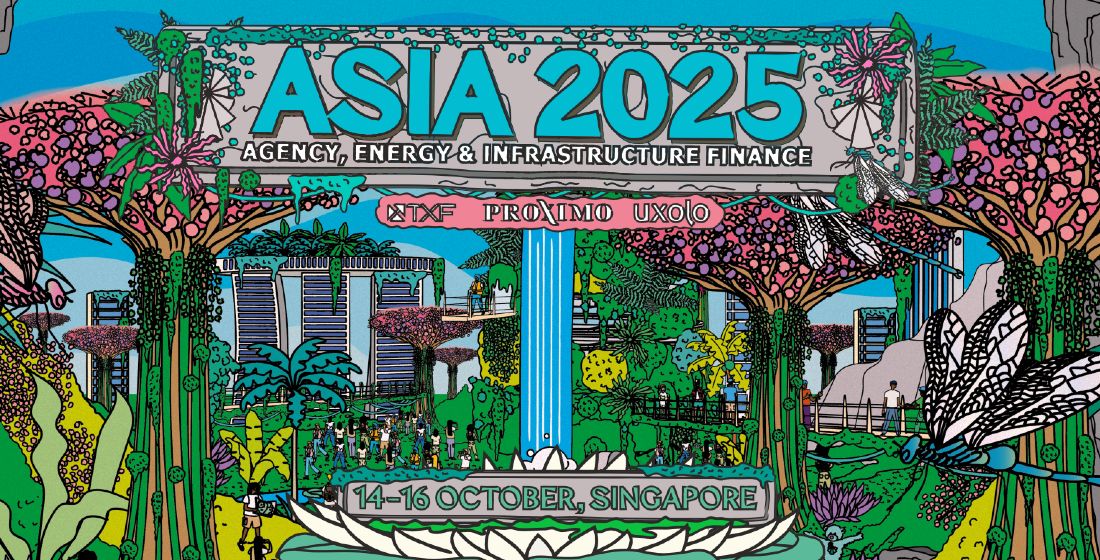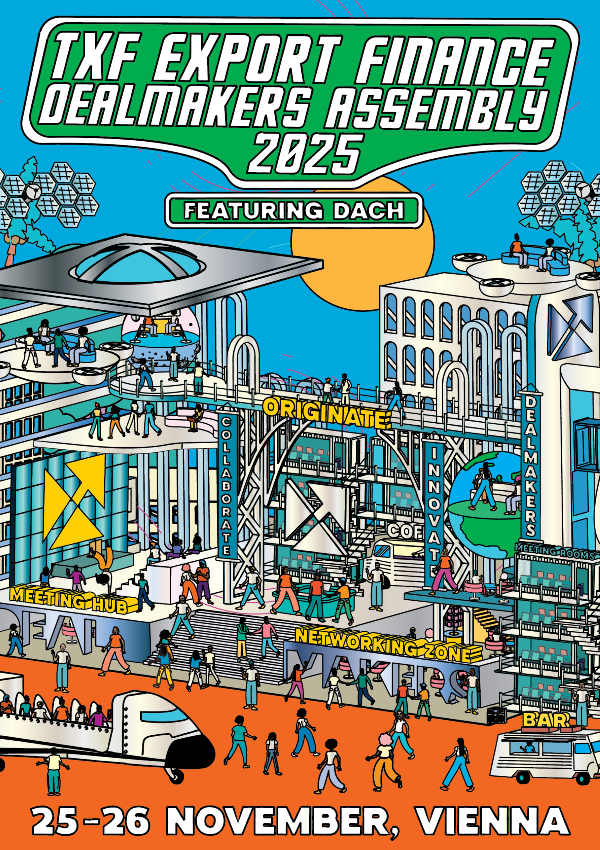On patchworks and bottlenecks: Will new Green Export Credit Guarantees help ECA climate financing?
EKN’s Green Export Credit Guarantee to support exports that contribute to climate change mitigation is something new. Will Sweden’s ECA’s new product be a template, and where will it sit amid the constantly shifting hurdles of regulations and initiatives to support financing climate change mitigation and ESG?

On February 6, EKN, Sweden’s export credit agency, announced its new Green Export Credit Guarantee. In a world of complex green initiatives and an evolving patchwork quilt of regulations, is it likely to be giant leap, or at minimum, a jump in the right direction? There has been a lot of focus on what ECAs cannot do, but what can they do in terms of financing climate change mitigation? Are ‘green’ guarantees a good way to overcome financing bottlenecks? What’s more, if they build it, will exporters actually come and use the incentives?
The Green Export Credit lets banks and exporters insure as much as 100% of a business’ value to protect against non-payment risk. This guarantee is for export transactions ‘for green products, or products with an end use as part of a green activity.’ And EKN has placed no limit in terms of deal size for the new product. EKN provides pure cover and SEK provides the lending with green social and sustainable linked loans.
“We hope to see transactions related to renewable energy, transmission, low carbon road and railway transport, low carbon manufacturing, waste management – to name a few examples,” says Victor Carstenius, senior analyst at EKN. “We have exporters very much active in these sectors and we have already seen transactions in many of them last couple of years. We want to promote and enable more export transactions like these.”
The export-oriented guarantee follows on from (and is complementary to) EKN’s Green Credit Guarantee launched in September 2021 for green investments and working capital needs within Sweden. That covers loans under SEK500 million for green investments and working capital needs only within Sweden, and covers the bank’s risk up to 80% (up from a previous 50%). It is offered to companies with direct or indirect exports that contribute to the climate transition. The assessment criteria for the earlier guarantee is based on the EU-taxonomy
“The first green guarantee has received a lot of interest but we have only seen a handful of applications so far,” says Carstenius. Why was that? “They tend to take a lot of time to complete since it is for new projects/investments, often with fairly new technologies. We have a pipeline of potential projects related to hydrogen, shipping and renewable energy, for example.”
Carstenius is optimistic about the new product. “In our first green credit guarantee, for export related investments in Sweden, we have seen many cases of SMEs developing new technologies – biogas, fertilisers, batteries, electric boats, recycling, etc. Hopefully some of them will also make use of the Green Export Credit Guarantee for the specific export transaction.”
While EKN’s portfolio is relatively modest, it is substantial in relation to the country’s GDP. The agency’s credentials for innovation are good, as being at the vanguard of innovation on the environment. For certain, ECAs are developing a plethora of ESG-related initiatives – CESCE, Hermes, BpiFrance, EKF, EDC, UKEF, Atradius, Credendo to name a few. EKN’s initiative is a small, but significant step, but it may be considered a leap when set alongside pending reforms to the OECD Arrangement and the emerging complex patchwork of regulations, the EU’s taxonomies and Climate Change Sector Understanding (CCSU).
Questions of tenor and Arrangement reforms
At one point it looked as if incentive issues could stymie ECAs’ expectations on ESG-related financing. Much focus has been on what ECAs cannot support. Modernisation of the OECD Arrangement on Officially Supported Export Credits (‘the Consensus’) and climate issues are certainly interlinked as ‘level playing field’ issues are at play. Nonetheless, ECAs aren’t waiting for the reform before proceeding with guarantees.
EKN’s initiative is in parallel to what is being discussed in the CCSU, and the green guarantees obviously have to follow EU state aid rules and OECD rules. “Yes, longer tenors and adding more green activities are being discussed in the CCSU,” says Carstenius. “There will probably be a large overlap between activities in a reformed CCSU and the EU taxonomy (there is even one today in the existing CCSU). Which means that transaction covered under our Green Export Credit Guarantee will often also benefit from longer tenors under the CCSU.”
Pekka Karkovirta, chairman of the participants to the Arrangement on Officially Supported Export Credits and vice president, international relations at Finnvera, tells TXF that contacts and discussions are progressing for the planned negotiation round in March in Paris. “Some issues in modernisation related to flexibilities to current terms and conditions are advancing relatively well,” he says. “Climate is also advancing. Whether we can announce some negotiation results in March remains to be seen, however, we should be able to finalise at least most issues by May (next negotiation round) – I hope.”
Regarding financing bottlenecks and Consensus reform, EKN’s Carstenius says the Swedish ECA is trying to work in tandem. “The two green guarantees we have launched are within our own mandate where we work with the cover ratio as the green incentive,” he says. “In time it would also be valuable if we can reform the OECD Arrangement and widen the CCSU. Sweden holds the presidency in the EU this spring so this is something we are focusing on in that context right now.”
The regulatory backdrop is certainly complicated and wider ‘green issues’, not specifically related to the Arrangement negotiations as a whole, are at play for exporters.
The green patchwork on export credits – will it make a quilt?
“In the future there will no one single definition on green export credits,” Karkovirta asserts. “There is the EU taxonomy, there will be green transactions under the Arrangement, there may be ECA defined green transactions, each bank may have their own definitions (green bonds, etc), there will be new reporting conditions for banks and/or ECAs, each actor may have to report ‘differently’ for different purposes.”
This complicated patchwork overlays the main consideration at the heart of any of these green incentives for ECAs, which remains the fundamental bankability of transactions. “The Arrangement can only do so much,” Karkovirta says. “Basically it only allows repayment terms for green transactions, however transactions from the outset should still be ‘bankable’ or done under sound underwriting principles, although some of the transactions may be politically (climate) motivated.”
Discretion, the better part of valour?
What tools do the ECAs have at play properly to incentivise climate change mitigating finance? “Some of the incentives are of course at ECAs’ discretion such as higher cover percentages (like EKN),” says Karkovirta. “Another that may be seen is lower domestic content requirements (again this may not be an issue for some smaller counties’ ECAs that already offer lower domestic content requirements), so it is basically up to ECAs to evaluate if there are any incentives that should be better than their standard offering.”
But incentives aren’t always going to make a difference as to whether a deal gets done. “Personally I think that while ECAs should actively contribute to advancing green transactions, the ways and means that ECAs can offer may well at best be contributing to [a deal being done] but may not be crucial for the realisation of the transactions,” Karkovirta notes.
Build it, but will they come?
Indeed, actually getting exporters to take incentives to do deals is a challenge. How does EKN plan to increase the uptake of green guarantees – and how best can exporters access them?
“Our idea is to have green options for a wide range of our guarantees”, explains Carstenius. “The Green Credit Guarantee is for projects in Sweden, whereas the Green Export Credit Guarantee is for the actual export – available both for suppler and buyer credits. So the two complement each other and have the same green incentive (higher cover ratio) and same green definition (EU taxonomy).
Is EKN’s Green Guarantee helping to make hydrogen projects bankable, for instance? Exporters continue to find it difficult to get deals over the line in ‘green’ hydrogen and many would welcome more ECA support. Carstenius says EKN has a number of requests that are under discussion. “But in general it is a long process and despite high risk coverage, it is a slightly longer process at the bank. A lot of it is unproven technology and it also requires the owners/investors to come in with additional capital, which takes longer right now.”
However, a more established sector where EKN sees interest in green financing is the shipping industry. “There, an EKN guarantee is crucial for the smaller shipping companies to be able to build new, environmentally friendly ships,” Carstenius says.
Bottlenecks aren’t all in finance – wider challenges of concentration risk for energy transition
Others are keen to assert that it isn’t so much finance that’s the bottleneck for ESG deals, rather more the commercial concentration challenges in resources needed for the energy transition and that is one area where ECAs can provide a positive impact on ESG outcomes.
Jørn Fredsgaard, department director, country, bank and sector at EKF [which has also allocated €10 million to a green project accelerator] argues that the challenging credit environment notwithstanding, financing is not a bottleneck for the ‘green wave’.
He asserts that banks, pension funds and private investors are keen to support green energy transition financing, and that governments will be prepared to support green technology investments where revenue support and risk mitigation is needed given current political drivers. Nonetheless, he expects other bottlenecks to prove more tricky to flush out. That is because some of the main technologies needed for the energy transition (wind and solar and batteries) are commercially and geographically concentrated, as are the critical minerals that go into their construction.
Although two Denmark-domiciled companies (Vestas and Siemens Gamesa) are international leaders in wind turbines, production is diverse, and US and China companies are taking market share. For solar panels and lithium batteries, Fredsgaard estimates 85% of all solar panels and 80% of all lithium batteries are produced in China. Geopolitics will continue to play a role in the move towards localised production and the building of gigafactories closer to where the energy is used. There are opportunities presenting where ECAs can already help improve ESG outcomes.
ECAs raising the bar on ESG
ECAs are already taking the opportunity to finance investments needed to extract critical minerals – this is an interesting analysis of the recent DRC copper and cobalt mining deal that EKN and SEC and African development bank TDB was involved in – and it is in this way that ECAs can help reinforce an agenda that should lead to more positive ESG outcomes.
“Speaking of critical minerals and securing access to raw materials for Swedish companies, we launched a credit guarantee for imports for the first time last year,” adds Carstenius. “This is also linked to the climate transition and Swedish companies that develop climate-smart solutions of course.”
More widely, as EKF’s Fredsgaard says: “In addition to securing good ESG standards, ECAs’ capacity to absorb risk is a crucial factor in the sector. While investments in the generation of green energy gravitate towards concentrations of GDP and thus are focused on the largest economies China, India, EU and the US, mining investments will naturally gravitate towards geographies with natural ore deposits. This means a lot of investments are in countries that are generally high on the OECD country risk spectrum – the natural playground of ECAs, which tend to have the highest capacity for risk. And maybe ECAs can potentially even play a mediating role between host countries and other project partners, if such need arises.”
Become a subscriber today for unrestricted access to the best export, trade and commodity finance analysis available.
Click here for information on the different packages available for you and your team
Exclusive subscriber-only content published last week:
DRC mining gets a boost with ECA and agency involvement
Recent copper and cobalt mine development financings in the DRC by EKN and SEK from Sweden and African development bank TDB are likely to act as encouragement to other financial institutions looking to become more active in the country....Read on here
Perspectives: Falcioni reflects on his five year tenure at ECI
TXF speaks to Massimo Falcioni, former CEO of the UAE Federal Company Etihad Credit Insurance (ECI) about his journey with the export credit agency, the challenges of diversifying towards non-oil energy in the region and his plans for the future....Read on here
Pertamina nears close on Balikpapan debt
Pertamina is close to signing banks into the loan to fund the upgrade of its Balikpapan refinery in East Kalimantan.The project involves the expansion....Read on here
BNPP announces a speed-up phase to reduce fossil fuel financing
BNP Paribas (BNPP) has announced that it will reduce its hydrocarbons financings book, while at the same time further building its low-carbon energy....Read on here
Autopista Santana-Mocoa-Neiva 4G toll road financed
Concesionaria Ruta al Sur – a joint venture between Patria Infrastructure Fund IV (70%) and Mercantil Colpatria (30%) – closed on a...Read on here
WTW appoints new global head of trade credit
Pieter Van Ede has joined WTW as global head of trade credit financial solutions. Van Ede joins from Aon, where he had been for seven years, with...Read on here
Aramco appoints new head of project finance
Saudi Aramco has appointed Abdulrahman Al bassam as head of project finance.Al bassam took over the role from Hamad Al Saleh in January. He has been.....Read on here
Cymi, Brasil Energia FIP, BNDES finance $159m Pampa transmission substation
Cymi Construcoes e Participacoes S.A. (Cymi), a subsidiary of Vinci, and Brasil Energia Fundo de Investimento em Participacoes Multiestrategia (Brasil....Read on here





